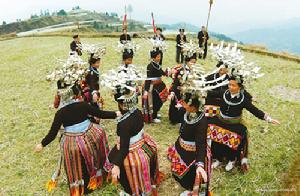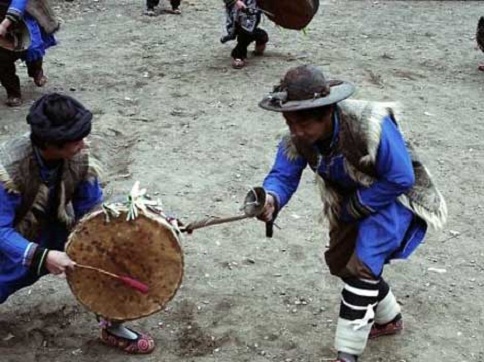kexigela It is a ritual dance of the Qiang ethnic group.
The Qiang now live in the northern Sichuan area, they have the oldest history of all ethnic groups in China, and it is one that still retains its original customs to this day.
The ancient nomadic Di and Qiang tribes once lived in the vast lands of North and Northwest China. Over a period of more than 5.000 years, they have experienced wars, annexation and separation, as well as incessant migration, thus integration with many local clans and tribes.
As a result, more than half of China's 56 ethnic groups have a certain amount of Qiang blood. As for the previously populous Di and Qiang tribes, they gradually became an ethnic minority group, inhabiting the northern Sichuan Minshan area.
The Kexigela or «armor dance»Is a ritual dance performed during sacrificial ceremonies. Traditionally, the dance was performed before soldiers went out to war or during commemorative events held by venerated deceased elders or national heroes.
Sichuan province has mountains and rivers, and is famous for its intricate topography. If you want to enjoy Qiang singing and dancing, depart from Chengdu for the Maoxian County, capital of the Tibetan Sichuan and the Qiang Autonomous Prefecture. From there, make your way to the Qiang communities amongst the Minshan Mountains.
However, to admire the wealth of Kexigela, it would take one more day to traverse the long roads that go from stone asphalt to dirt roads, and a winding path before reaching the "Qionglong" of the Qiang, which is found at the top of the a mountain range in Xi'er Stockade Guazi, Mawo Township, in the Xi'er Area.
According to legend, while the ancient Qiang were at war with another tribe, the White Stone God intervened to save them from certain death.
The Qiang are known for being straightforward. And they love song and dance. There are two main types of Qiang singing and dancing: those for sacrificial rituals, and those for entertainment. This ethnic group is polytheistic and believes that all beings have a soul. For them, the deceased have great influence in life and therefore pay close attention to funeral ceremonies.
In the Kexigela, a large wine jar and a large wooden barrel of boiled water are placed in the center of the dance area, usually a wheat threshing floor. Armed with a long-handled wooden spoon, a master of ceremonies calls for silence from the rest of the crowd and signals to the participating women of the family to begin singing.
Standing shoulder to shoulder and dressed in colorful Tibetan-style costumes, the women join their voices in a melodic but melancholic chorus. As they sing, older men from the village make their way around the land was, brandishing their knives and axes in the air, and taking their positions alongside the singers.
The oldest woman begins the ceremony by drinking the wine through a straw, followed by others based on her age, condition, and position in the hierarchy. The master of ceremonies fills the wine carafe with boiled water after each person takes a sip of wine, which actually prepares the wine for a new round of fermentation.
As the women continue to sing, the men continue to brandish their weapons in the air and shout "oh-ya, oh-wu." The movements are slow and unhurried, which creates a solemn and respectful atmosphere, he believes it is necessary to drive out evil spirits and protect the souls of dead people. ' The men make several rounds of the ceremonial precincts before reforming their lines. They are a couple and perform the movements to represent a mock battle.
The men retreat, while the women continue to sing, this time throwing their arms and moving their bodies with more force. His movements represent an expression of pain.

